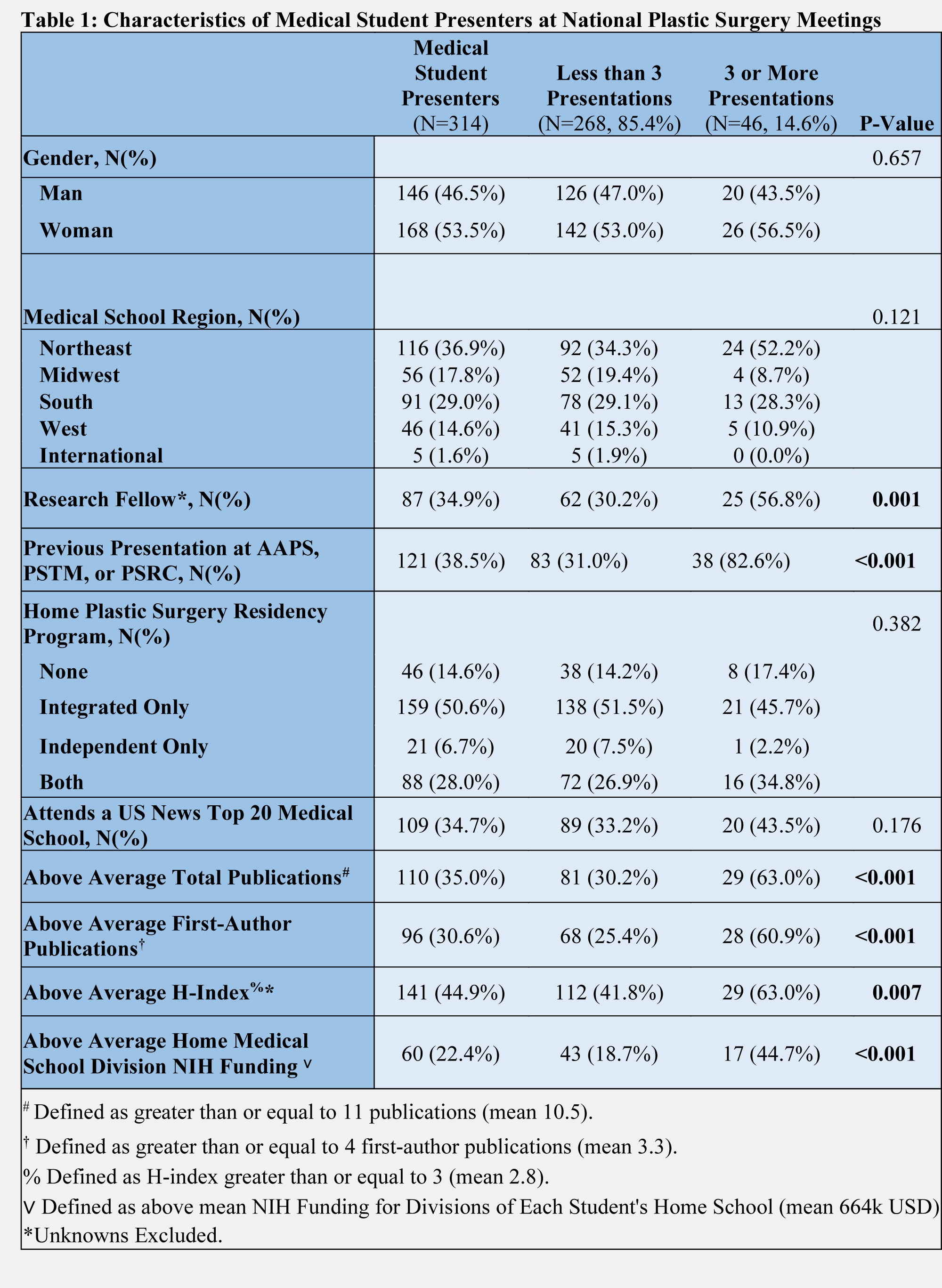The Medical Student Race to Research: Who Presents More at National Plastic Surgery Conferences?
Rose S. Maisner BS1, Joshua B. Cadwell MBA, MS1, Amy Song BS1, Melody Ong BS1, Christopher Goydos BA1, Shyamala Subramanian BS1, Ishani Patel BA1, Kailash Kapadia MD1, Edward S. Lee 1
1Division of Plastic and Reconstructive Surgery, Department of Surgery, Rutgers New Jersey Medical School, Newark, NJ
Background: With one of the lowest match rates, plastic surgery is among the most competitive specialties with academic productivity of its matched applicants rising. Abstract presentations increase research output and facilitate networking. We aim to determine predictors of more national plastic surgery presentations by medical students, identifying disparities in research opportunities.
Methods: All available abstracts presented at the two most recent meetings for the American Society of Plastic Surgeons (2019, 2020), American Association of Plastic Surgeons (2019, 2021), and Plastic Surgery Research Council (2019, 2021) were extracted from online archives. Presenters without MD’s or other professional credentials were classified as medical students. Abstracts with internationally affiliated presenters were excluded. Presenter gender was determined using Gendorize.io. Medical school was determined through Google and categorized by US News Research rankings. Home plastic surgery division/department NIH funding was calculated by summing all rewards for full-time faculty on NIH RePORTER. Research fellowship completion was suspected if affiliate institution and school differed and confirmed through Google. Number of total and first author publications and h-indices, calculated from Scopus and PubMed, were recorded. Students who presented ≥3 (>75th percentile) or less were compared by chi-squared tests. Univariate and multivariable regressions were used to identify factors associated with ≥3 presentations.
Results: Of 1,576 abstracts, 549 (34.8%) were presented by 314 students. The gender distribution was 46.5% male and 53.5% female, similar for students with more and less presentations. Most students were from the Northeast (36.9%) and South (29.0%). Over 3 years, 61.8% of students presented once, while 14.6% presented ≥3 times. Those who previously presented, completed a research fellowship, had more publications, or higher H-indices were likely to present more (p<0.001). On multivariable-adjusted analysis, completing research fellowships (OR=2.34, p=0.045), affiliations with above average plastic surgery NIH funding (OR=3.73, p=0.004), and having above average total (OR=3.81, p=0.018) or first author publications (OR=3.84, p=0.008) was associated with more presentations. Gender, region, school ranking, having a home program, and h-indices, were not significant predictors on multivariable analysis.
Conclusions: Medical students who previously presented at national plastic surgery meetings, completed research fellowships, have more publications, and attend schools with more plastic surgery NIH funding are more likely to present. With under 15% of students presenting ≥3 times, identifying modifiable factors that can improve presentation chances, like research fellowships and publishing more manuscripts with first authorship, is important for improving disparities students face in plastic surgery involvement.
Back to 2022 Abstracts

